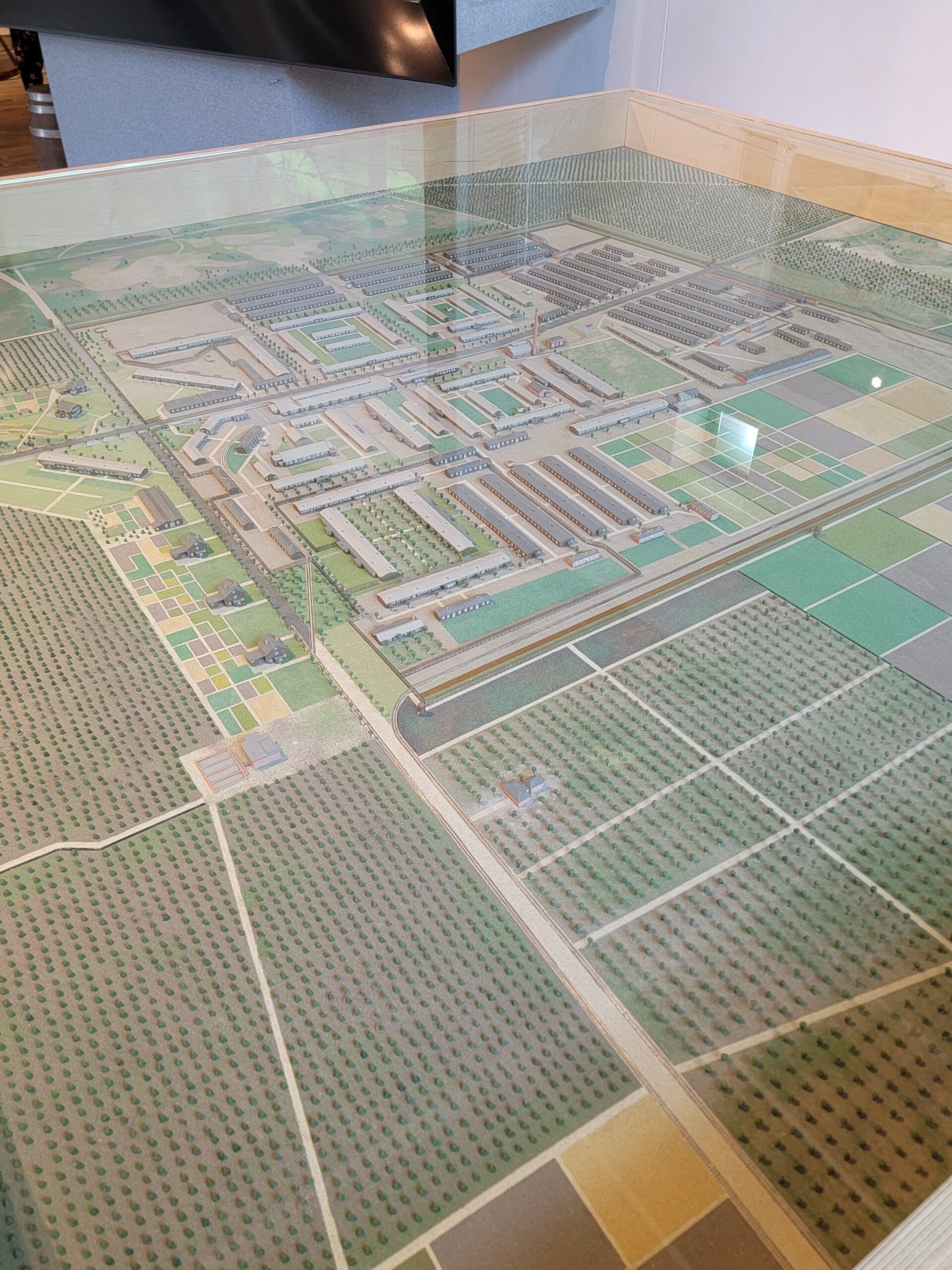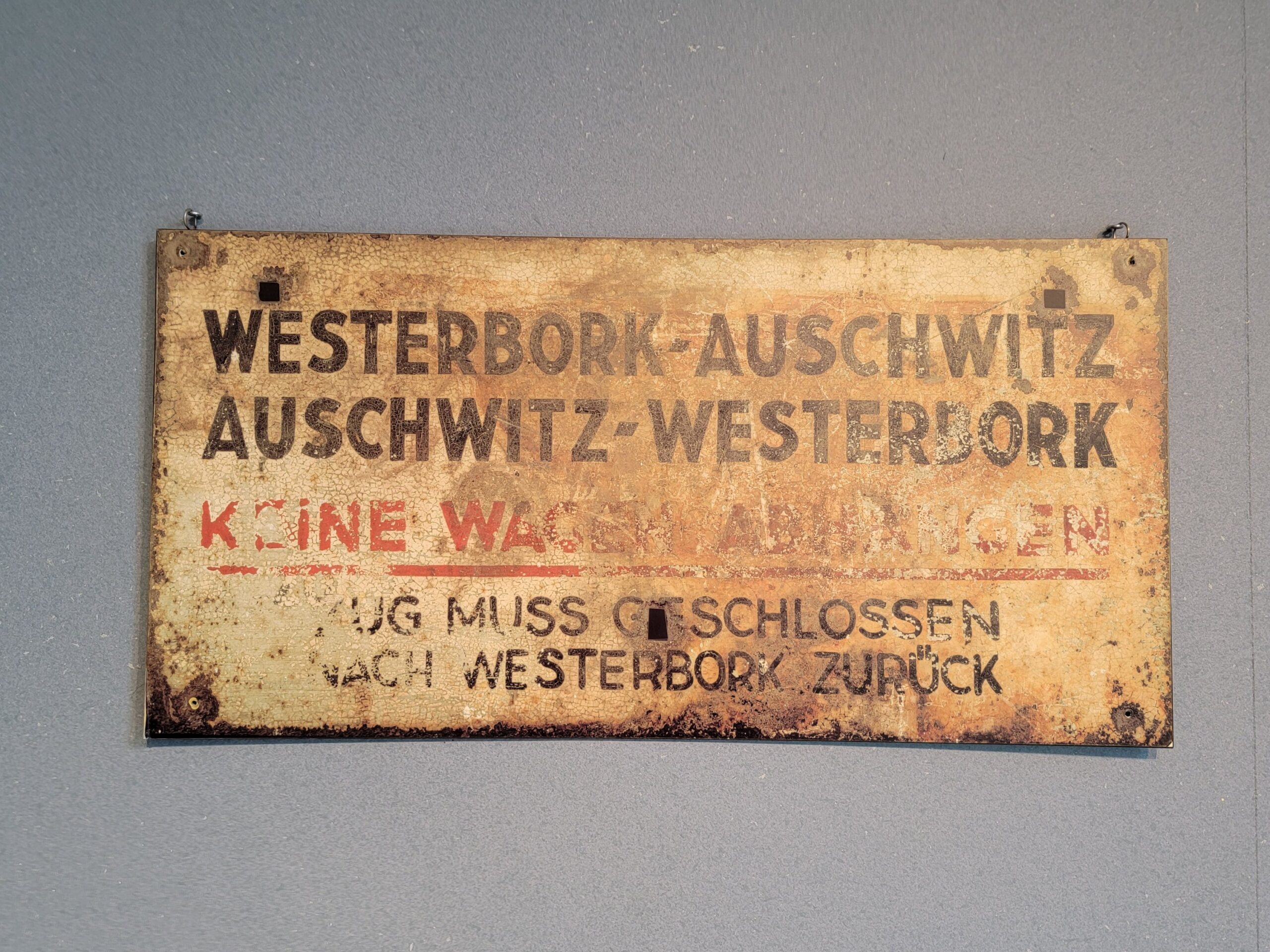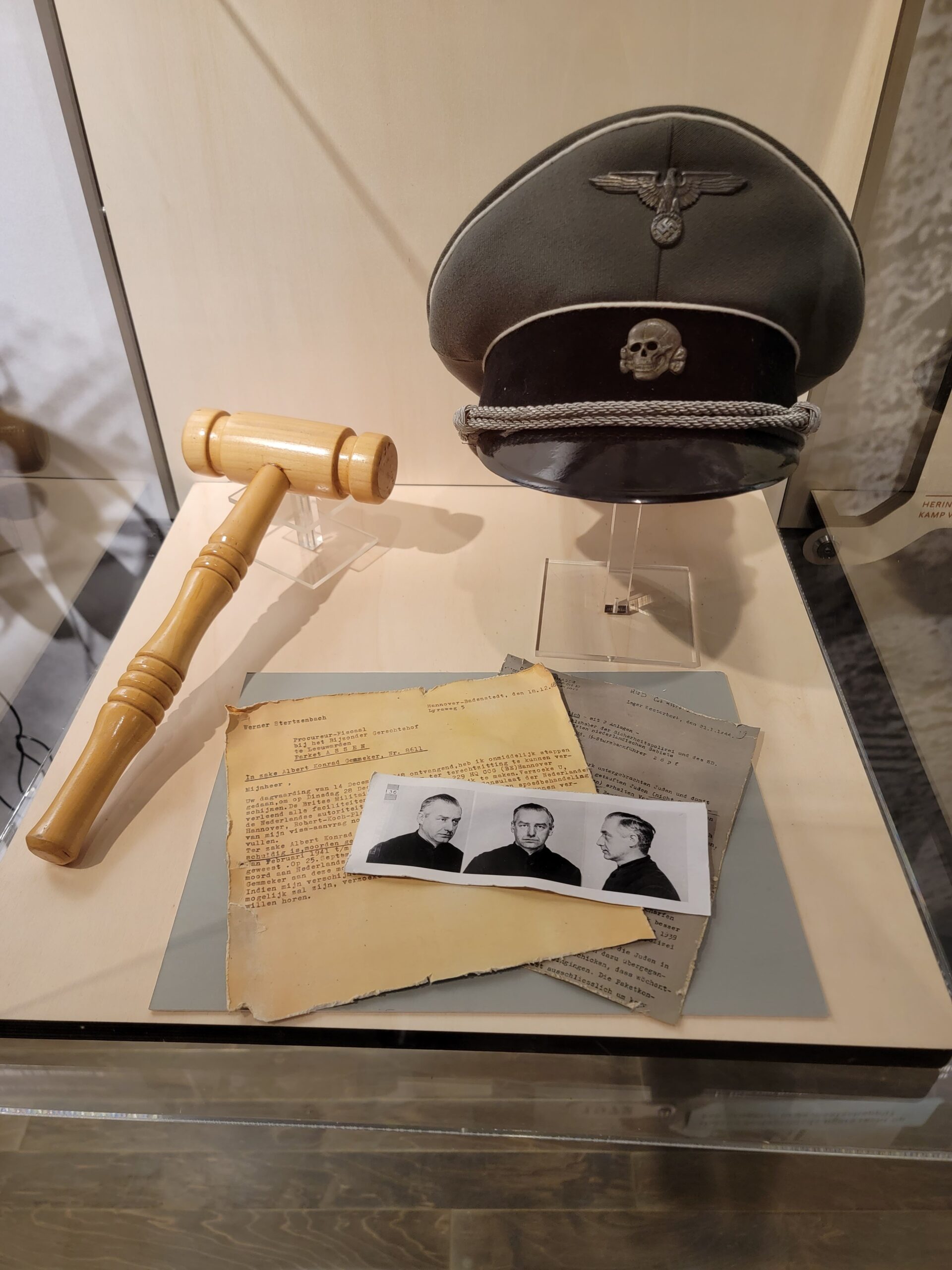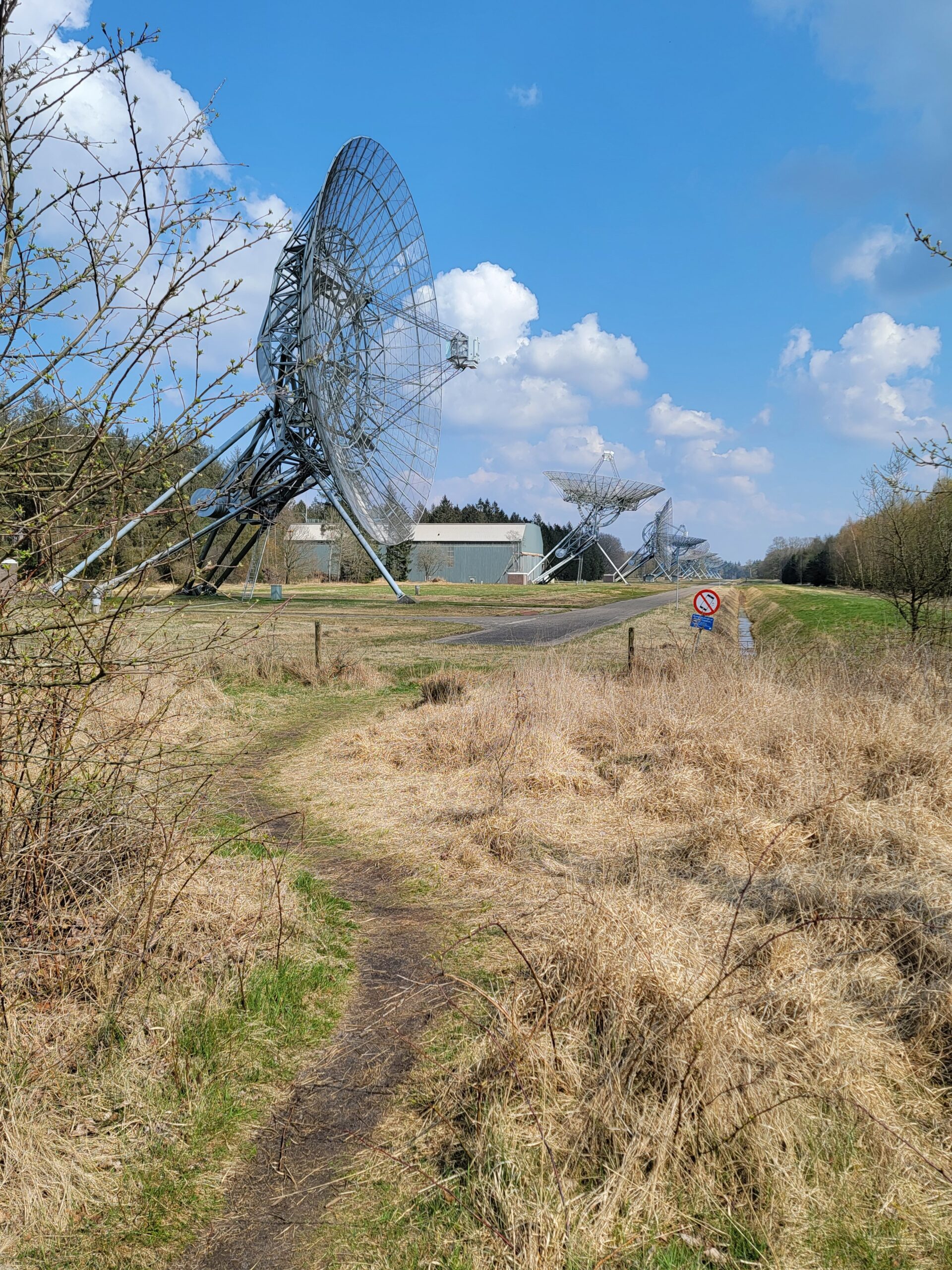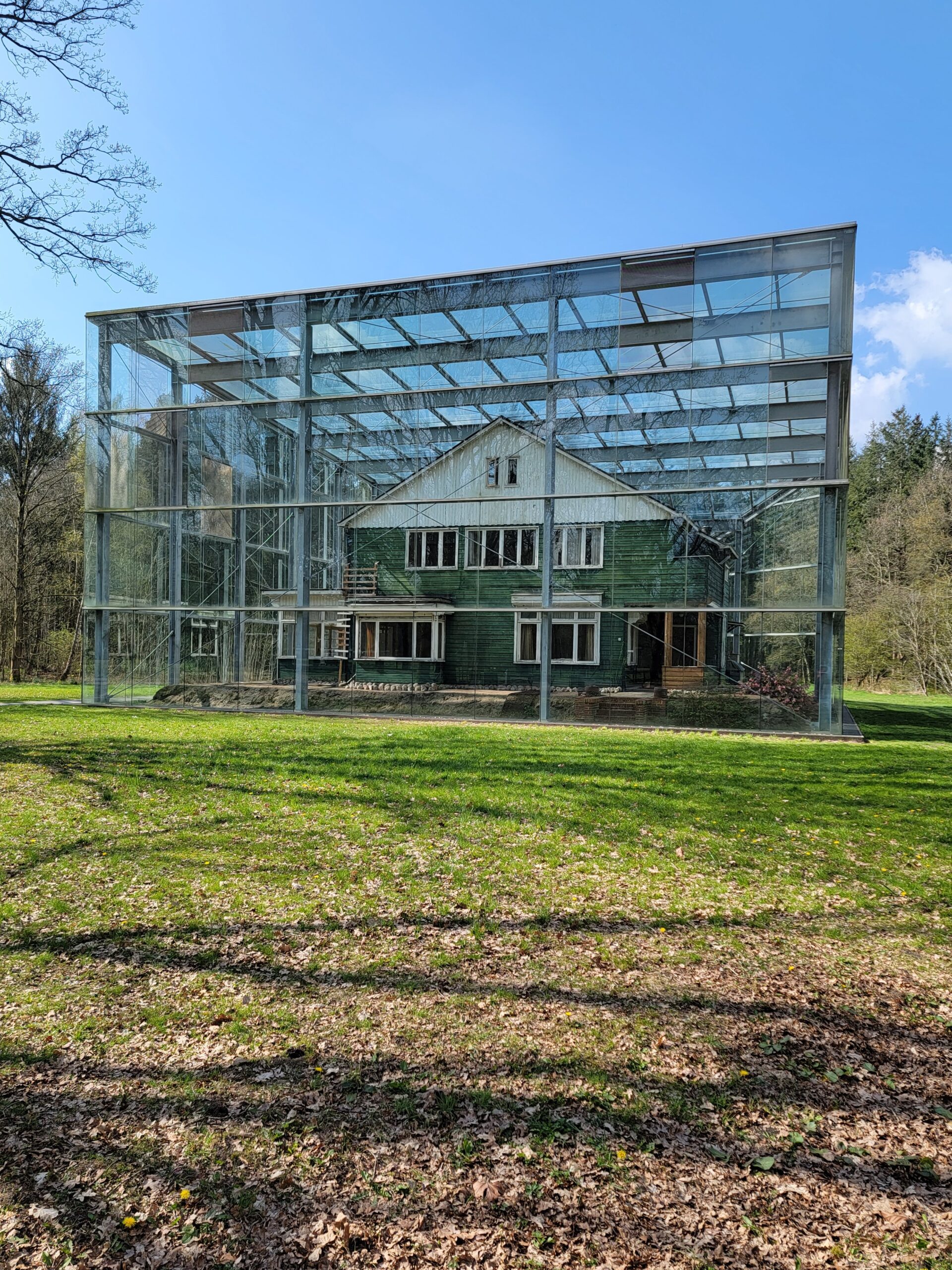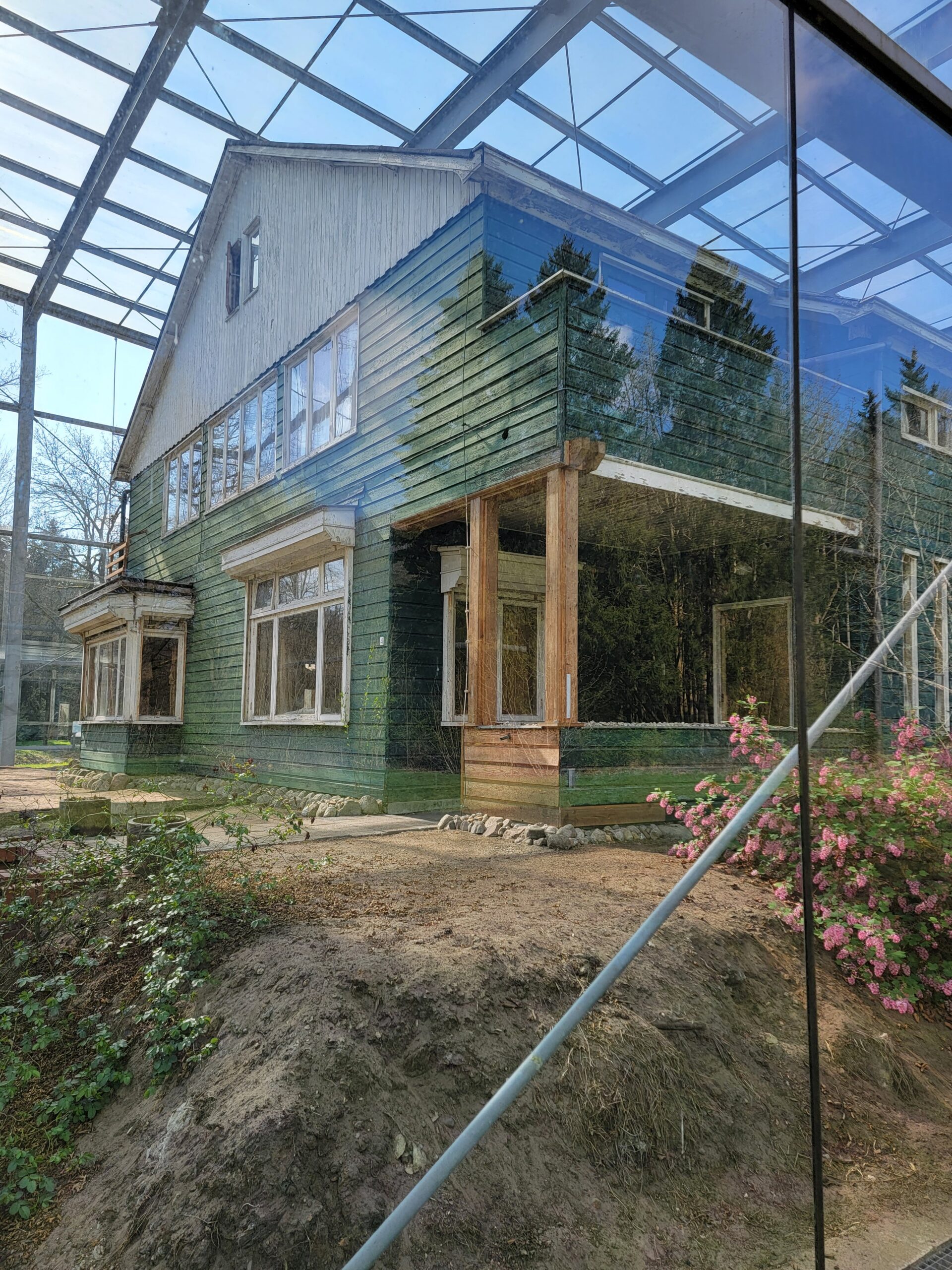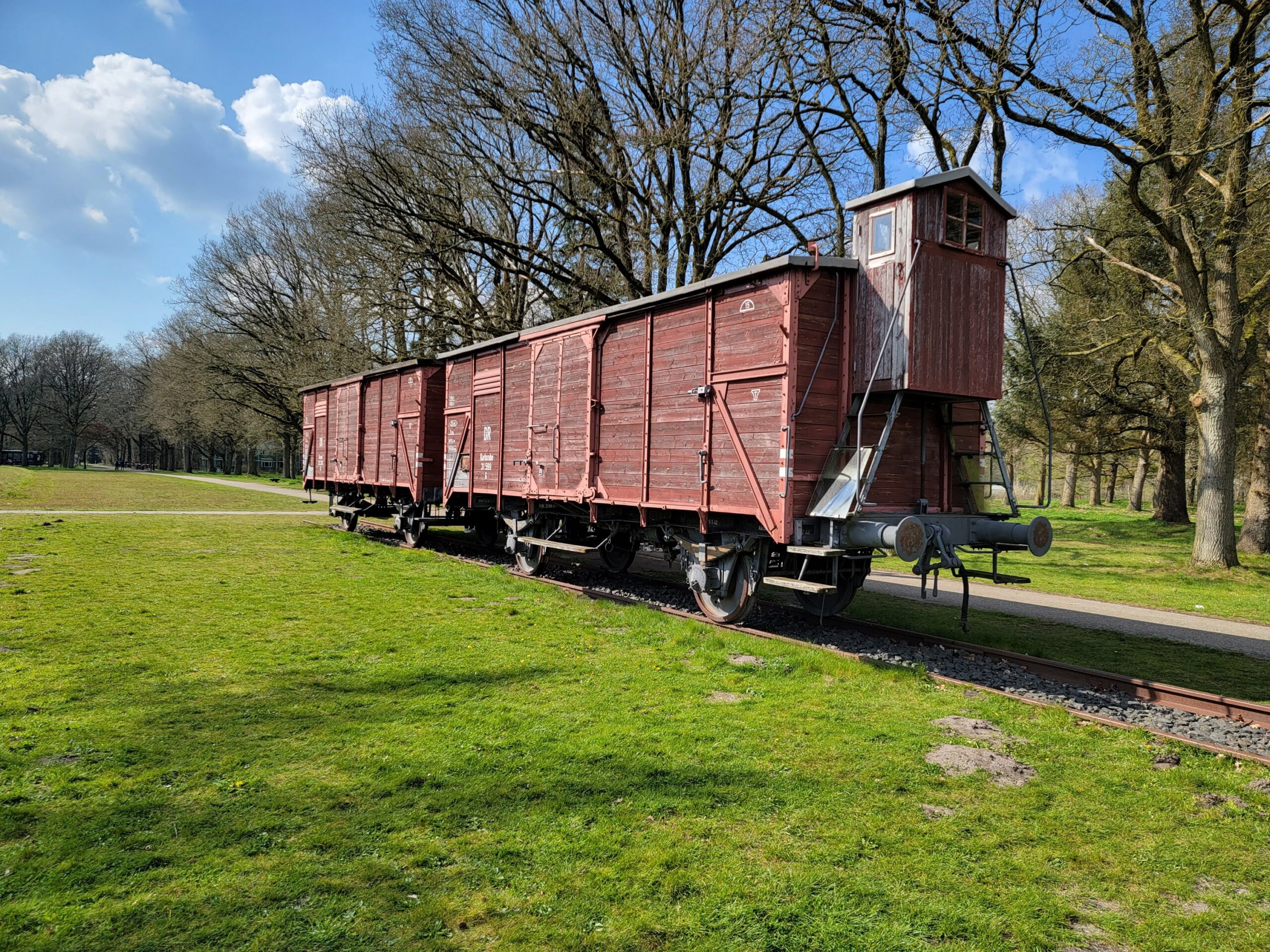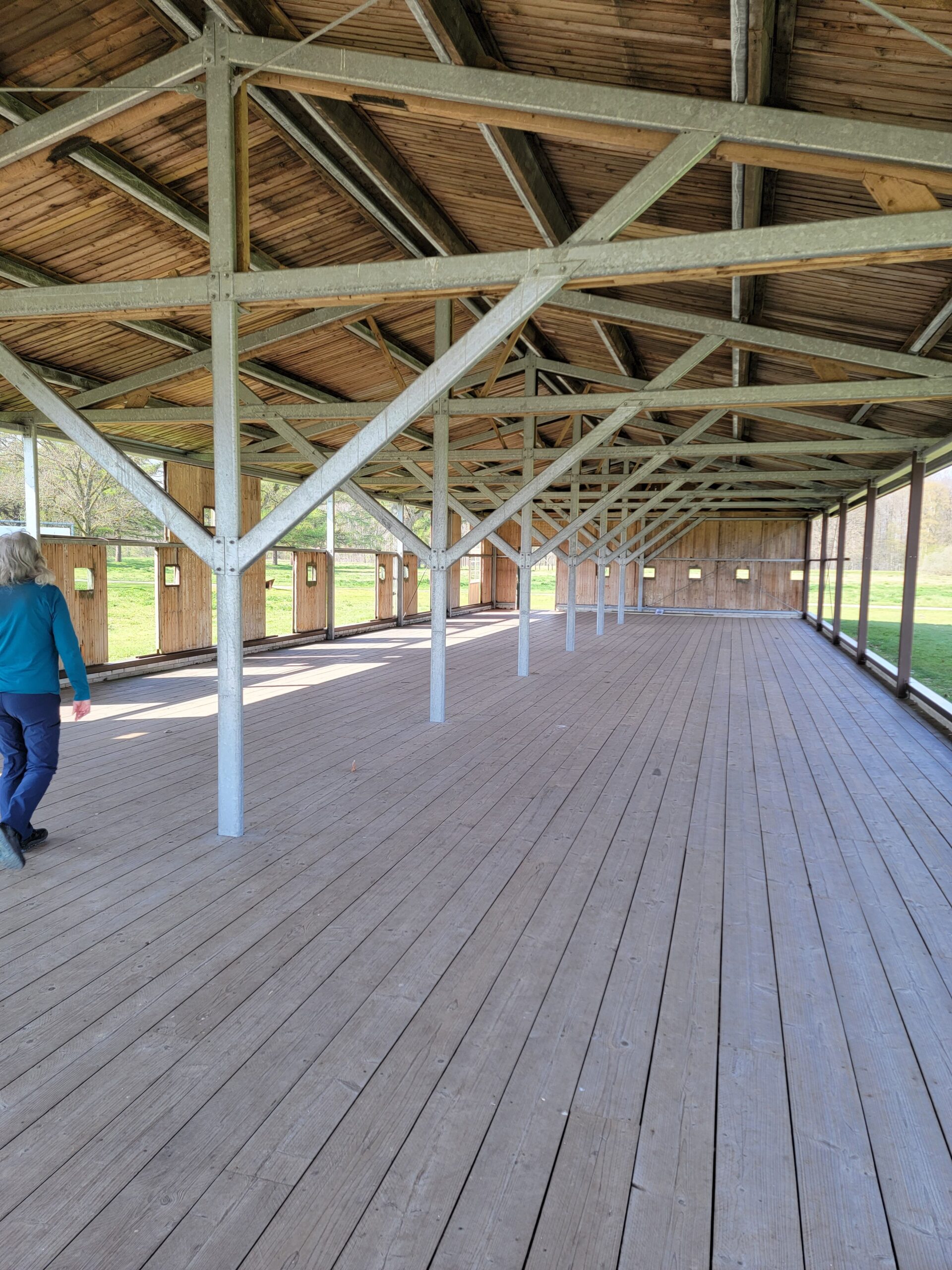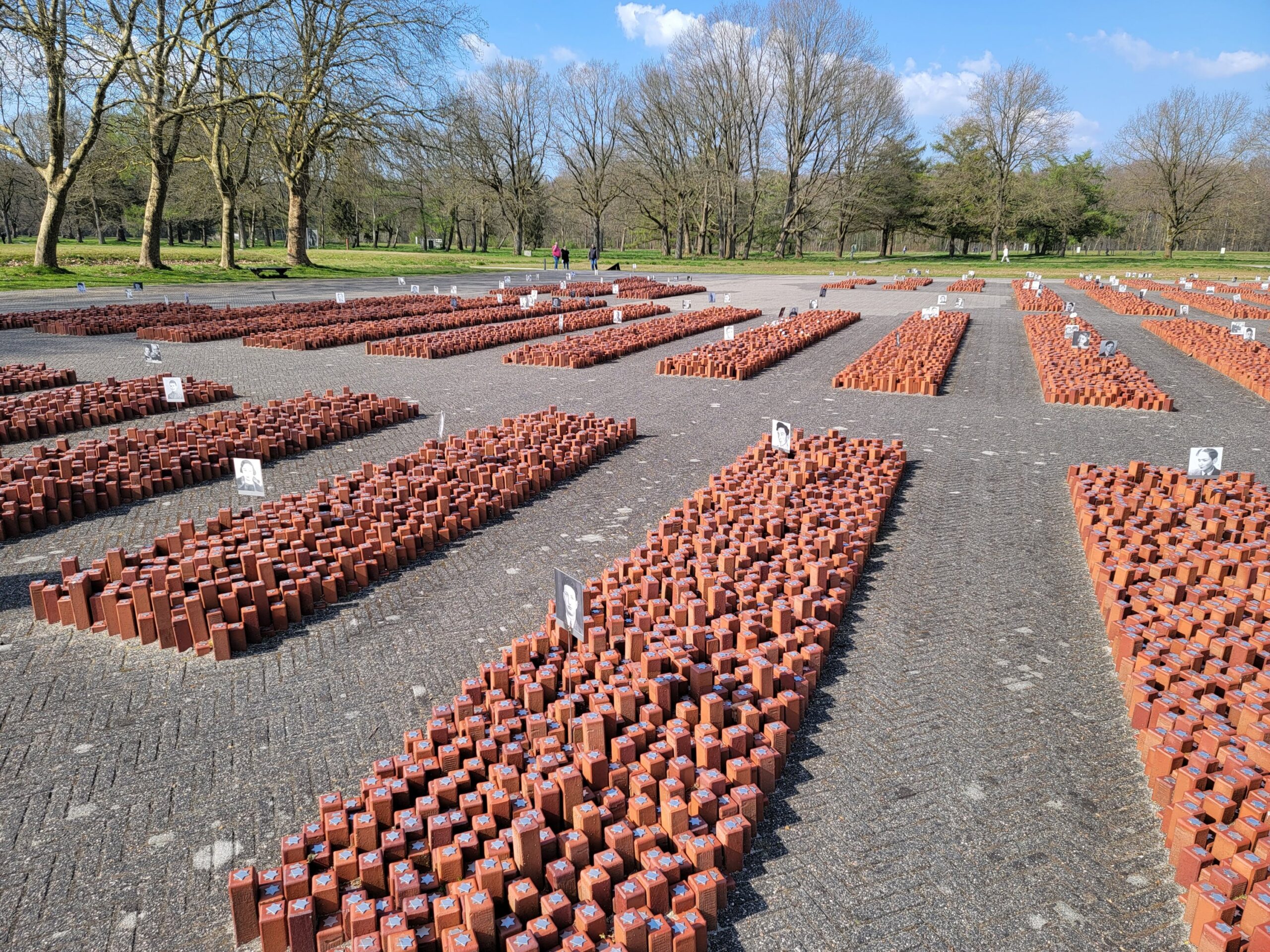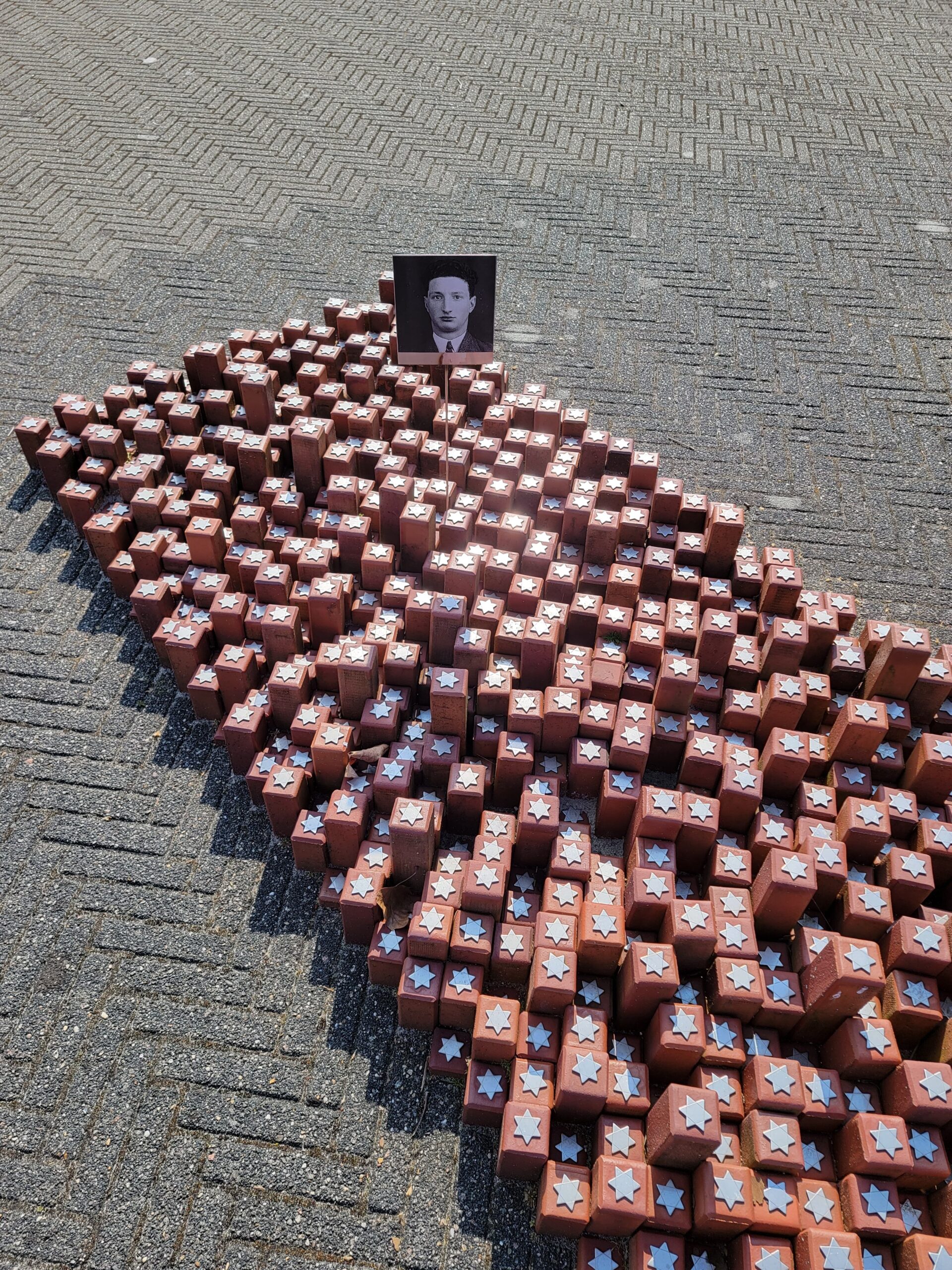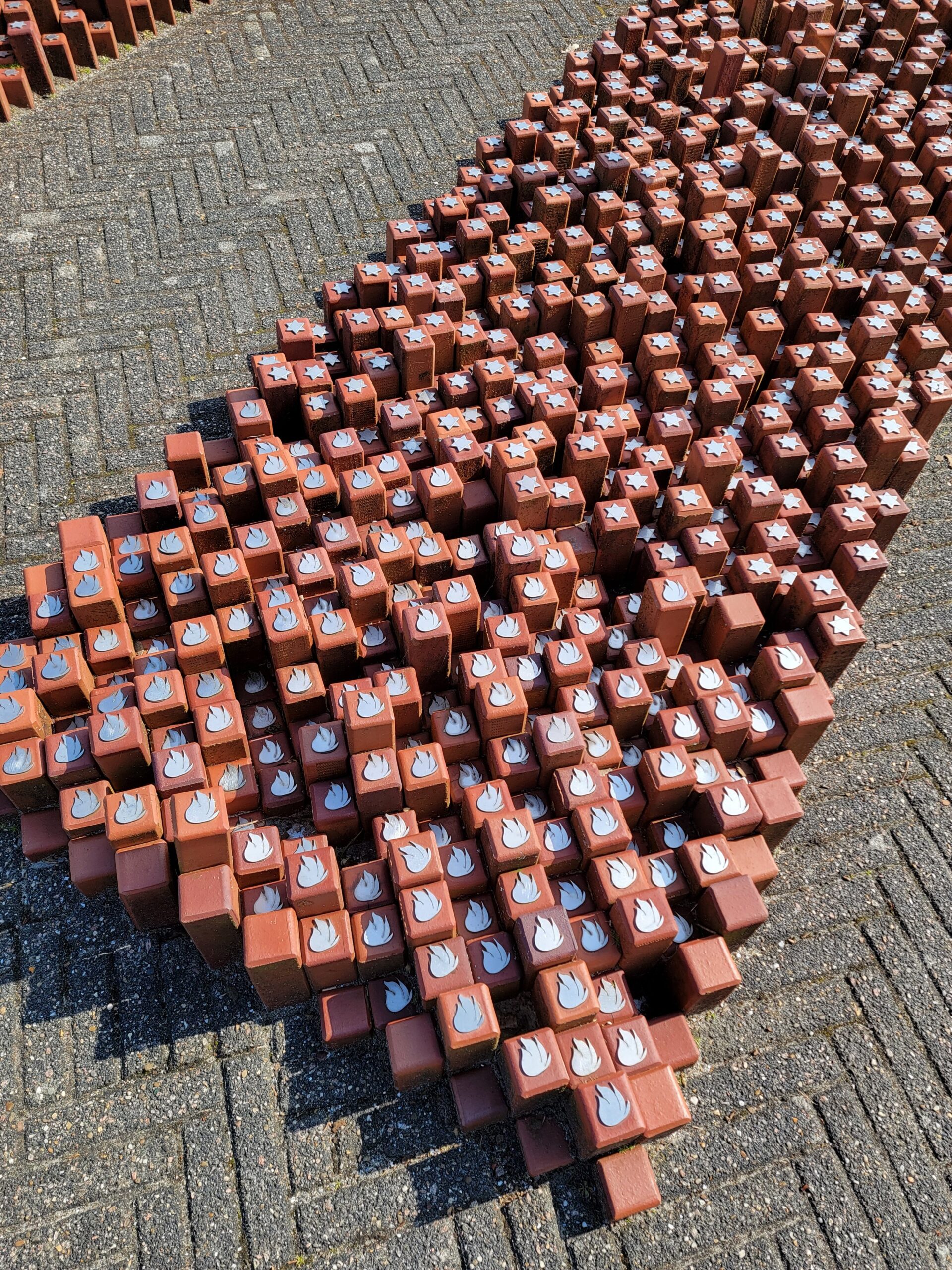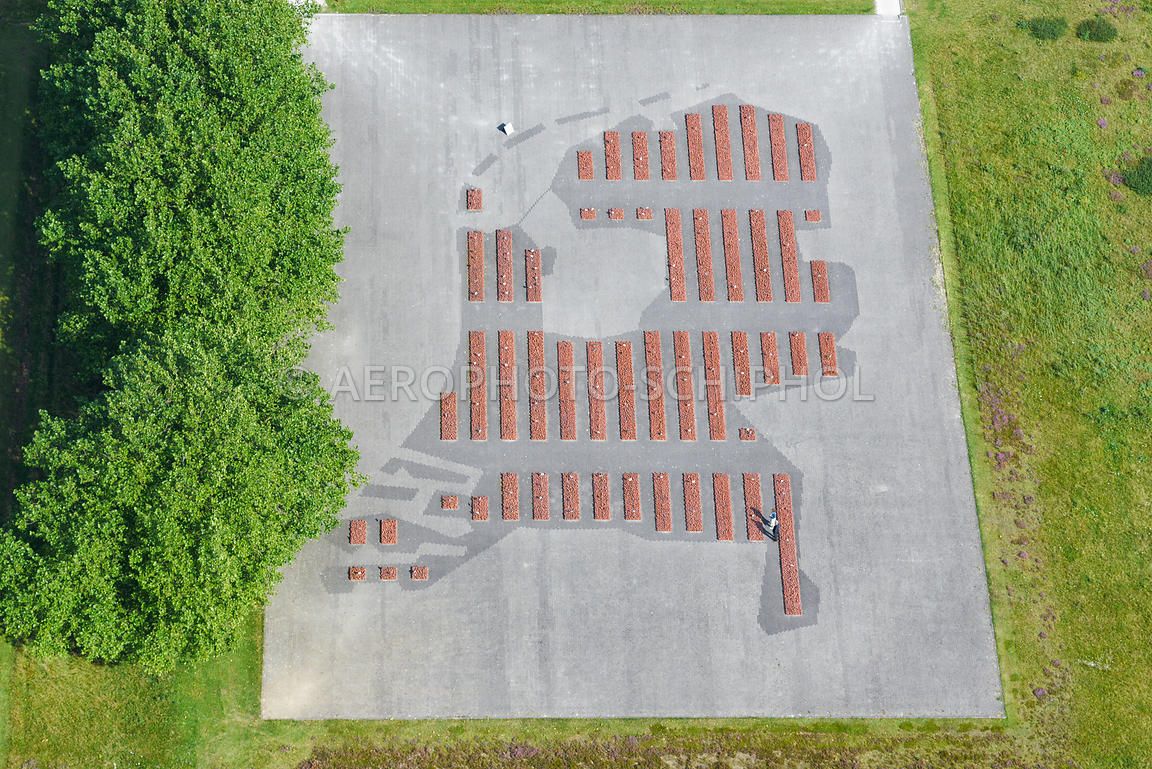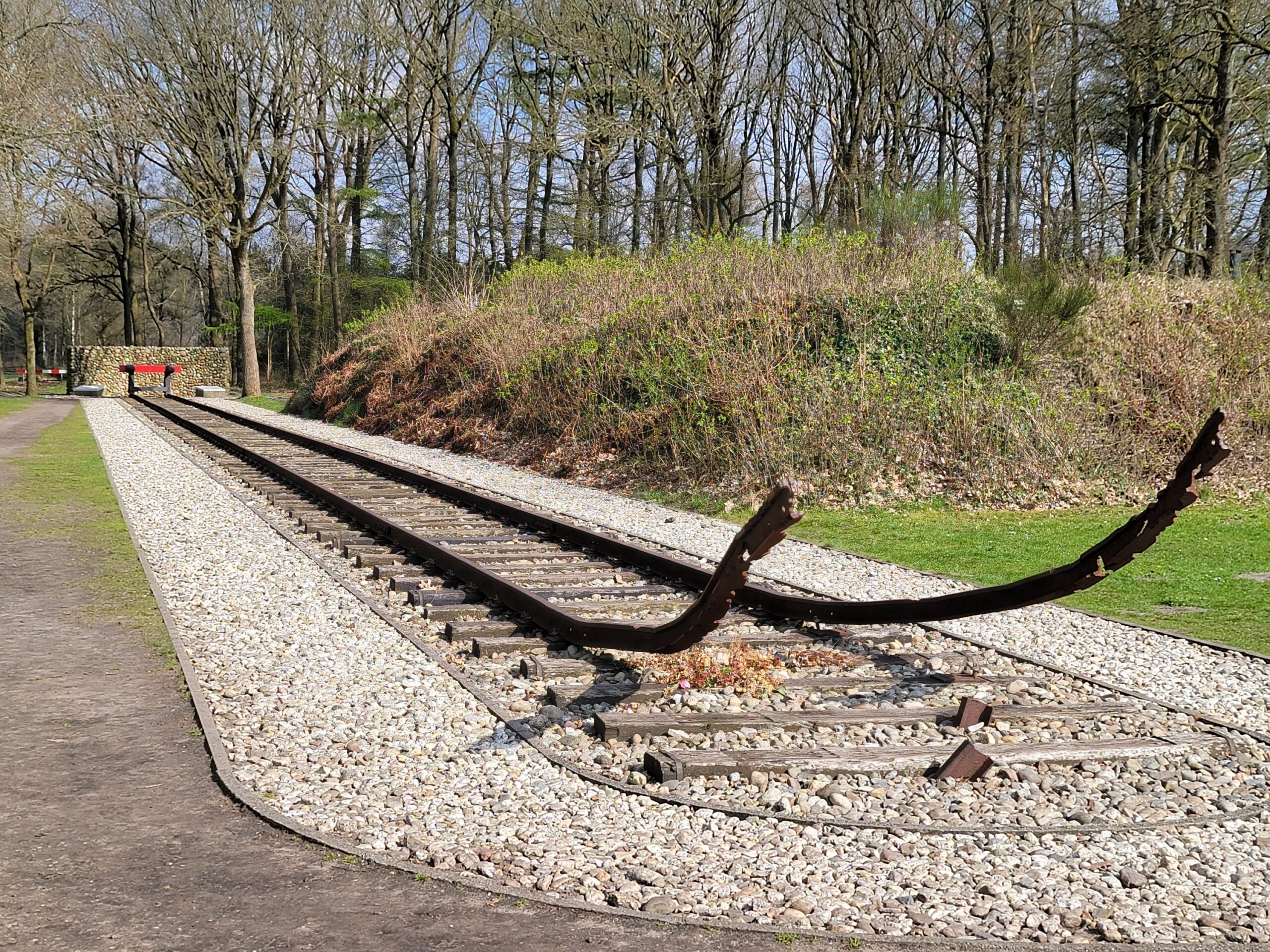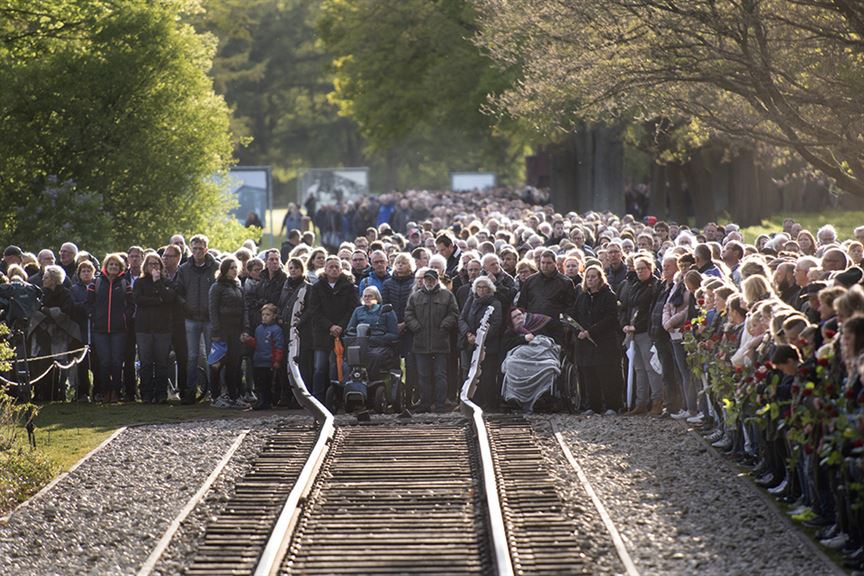On our way from Zwolle to our next stop, Groningen, we visited Camp Westerbork. This site was built by the Dutch in 1939 to accommodate Jewish refugees who had fled from Germany and Austria to escape Nazi persecution. After the Nazis invaded and occupied the Netherlands, the camp became known as “The Gateway to Hell”, as the Nazis repurposed it as a transit camp for the transport of Jews, Sinti, and Roma from the Netherlands to concentration camps, including Auschwitz, Sobibor, Theresienstadt and Bergen-Belsen.
There is a museum to visit, and then you can either walk or take a bus to the site, which is about 1.5 miles from the museum. The museum was good, but not enough of it was in English. Google Translate is your friend! The below is a depiction of the camp at it’s largest during WWII.
This is a sign from one of the train-cars that carried the Jews to Auschwitz. Below Westerbork-Auschwitz, Auschwitz-Westerbork it reads “Don’t Uncouple Any Wagons” and “Train Must Return Complete to Westerbork”.
The below display is about Camp Commander Albert Gemmeker, who ran the camp from 1942 to 1945. After the war he insisted he never knew what happened to the Jews after they left Westerbork. He received a mild sentence of 10 years, of which he served 6, due to the fact that there was no evidence he had knowledge of the mass murders, and the fact that the prisoners at Westerbork were treated well, for the most part. He even had some of the former Jewish prisoners who had survived the war testify on his behalf.
It was a nice day, so we decided to walk to the Westerbork site. If you plan to visit the site make sure you pick up an audio guide from the museum.
Along the way are two “whispering” dishes, aligned with each other. With one person at each dish, you could whisper into the dish and the person 50 yards away could hear you from the reflections in their dish. This was an educational tool regarding radio astronomy.
The reason for this educational tool is there is a large radio telescope array directly adjacent to the Westerbork site.
At the entrance to the site you can see the last remaining building, the Commanders’s House. In order to preserve the house they built this large glass structure around it.
There are no tours of the house, but photos at the museum showed the interior is in pretty bad shape.
This is the entrance to an SS air raid bunker. You can actually walk inside the bunker, but it’s just one dank room. It was also used to store Allied ammunition that was air-dropped for Dutch resistance fighters, but discovered by the Nazis.
These are typical boxcars of the type that were used to transport the Jews from Westerbork.
They rebuilt part of one of the barracks at the site. During the years after the war a local farmer had purchased one of the barracks and moved it to his farm as a barn and feed storage building. The museum purchased it back and rebuilt it to give you a feel for the size of the barracks.
The raised areas throughout the site indicate former building footprints.
This area is called “102,000 Stones”, and represents the Jews, Sinti and Roma from the Netherlands who were murdered by the Nazis.
Most of the stones have the Star of David on top. There are also various photos left by loved ones.
There are 213 stones which have a flame to symbolize the Sinti and Roma who were murdered. A few dozen have no symbol, and these stones commemorate resistance fighters who were imprisoned in Camp Westerbork, then sent to the concentration camps to never return.
I pulled this photo off the internet. The stones are laid out in the shape of the Netherlands.
The National Monument of Westerbork is at the far end of the site. The monument was designed by camp survivor Ralph Prins. The curled up rails express despair, like the raising up of arms. There are 93 railroad ties (which the Dutch call “sleepers”), each one symbolizing a transport that left Westerbork. The 4 railroad ties not in contact with the rail symbolize 4 transports that left for concentration camps from elsewhere in the Netherlands.
This monument may be the only one that has been unveiled twice. The official unveiling on May 4, 1970 was only attended by a select group of dignitaries and members of the press, but not the people that really matter, the survivors and families of the victims. Because of this oversight, there was a second unveiling in September 1970, where 150 survivors were in attendance with their families. Every year there is a memorial on May 4th, which is usually attended by thousands.
Anne Frank and her family came through this site, and on September 3, 1944, they left on the final transport to ever leave Westerbork.
Next up, we visit the city of Groningen, Netherlands.

